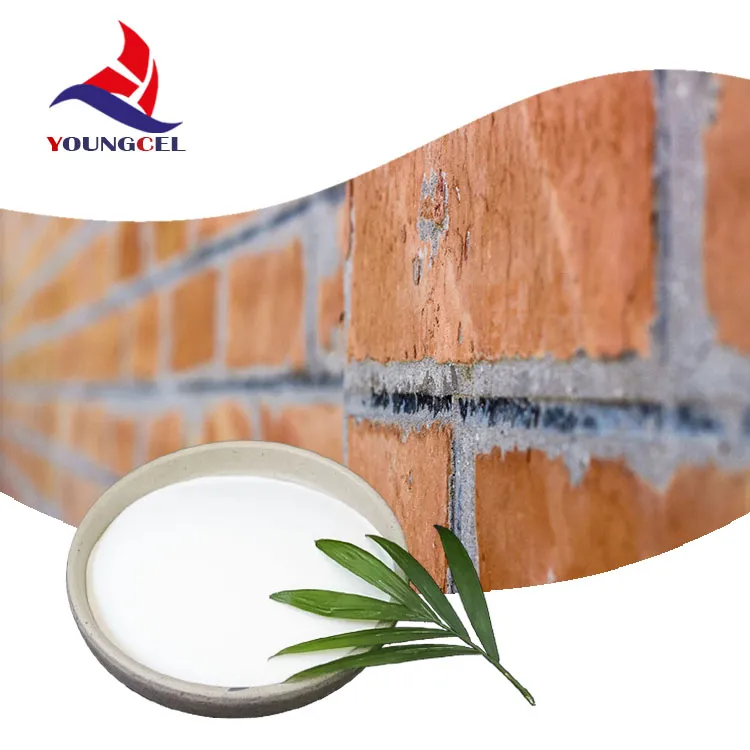Exploring the Role of HPMC in Building Coating Adhesives
Hydroxypropyl Methylcellulose (HPMC) is a versatile and highly effective polymer widely used in the formulation of building coating adhesives. As construction practices evolve and demands for sustainable and efficient building materials increase, HPMC has emerged as a crucial component in enhancing the performance of adhesives. This article explores the unique properties of HPMC, its applications in building coatings, and the advantages it offers to the construction industry.
Understanding HPMC
HPMC is a non-ionic cellulose ether derived from natural cellulose. Its unique chemical structure provides it with excellent properties, making it suitable for a variety of applications in construction. HPMC is highly soluble in water and can form stable gels, which provides thixotropic behavior that is particularly beneficial for building adhesives. Additionally, it is biodegradable and environmentally friendly, aligning with the growing trend of using sustainable materials in construction.
Applications in Building Coatings
In the realm of building coatings, HPMC plays several critical roles. Its primary function is to enhance the workability and adhesion of adhesives used in construction. When added to cement-based adhesives, HPMC improves the uniformity and consistency of the mixture, ensuring that it spreads easily and adheres effectively to various substrates. This is particularly important in applications such as tile adhesives, plastering mortars, and wall putties.
Moreover, HPMC contributes to the water retention properties of the adhesives. By reducing the rate of water evaporation during application, it allows for a longer open time, which is vital for achieving strong bond strength. This property is especially beneficial in hot and dry environments where rapid drying could compromise the adhesive’s performance.
Advantages of HPMC in Building Coating Adhesives
building coating adhesive hpmc

1. Enhanced Adhesion One of the most significant benefits of incorporating HPMC into building coating adhesives is the substantial improvement in adhesion strength. It forms a robust bond between the adhesive and the substrate, which is crucial for the durability of the construction.
2. Improved Workability HPMC imparts a creamy texture to the adhesive, making it easier to apply and manipulate. This workability leads to more efficient application processes, saving time and labor costs during construction.
3. Thixotropic Properties The thixotropic behavior of HPMC ensures that the adhesive remains stable during application. It allows the adhesive to maintain its viscosity when undisturbed but becomes more fluid when subjected to shear stress, facilitating easy application without sagging or dripping.
4. Water Retention HPMC’s ability to retain water prevents premature drying of the adhesive. This prolongs the setting time, allowing for adjustments during application, which is particularly beneficial in intricate laying processes, like tiling.
5. Eco-Friendly As environmental concerns continue to mount, the use of biodegradable materials like HPMC aligns with sustainable practices in construction. It provides an eco-friendly alternative without compromising on performance.
Conclusion
Hydroxypropyl Methylcellulose (HPMC) stands out as an indispensable ingredient in the formulation of building coating adhesives. Its multifunctional properties significantly enhance the performance, durability, and sustainability of adhesives in the construction sector. As the industry continues to prioritize efficiency and environmental responsibility, HPMC's role is likely to expand, paving the way for innovative solutions in building materials. With its ability to improve adhesion, workability, and water retention, HPMC not only meets the requirements of modern construction but sets a standard for future advancements in adhesive technology. As we move forward, the integration of HPMC into building materials will undoubtedly contribute to the development of more resilient, efficient, and eco-friendly construction practices.
-
Rdp Powder: Key Considerations for Wholesalers in the Building Materials IndustryNewsJul.08,2025
-
Key Considerations for Wholesalers: Navigating the World of Hpmc - Based ProductsNewsJul.08,2025
-
Hpmc Detergent: Key Considerations for WholesalersNewsJul.08,2025
-
Key Considerations for Wholesalers: China Hpmc For Tile Adhesive, Coating Additives, Concrete Additives, and MoreNewsJul.08,2025
-
Crucial Considerations for Wholesalers: Navigating the World of Construction MaterialsNewsJul.08,2025
-
Key Considerations for Wholesalers Sourcing Additive For Cement, Additive For Concrete, Additive For Putty from Additive Manufacturer Shijiazhuang Gaocheng District Yongfeng Cellulose Co., Ltd.NewsJul.08,2025




